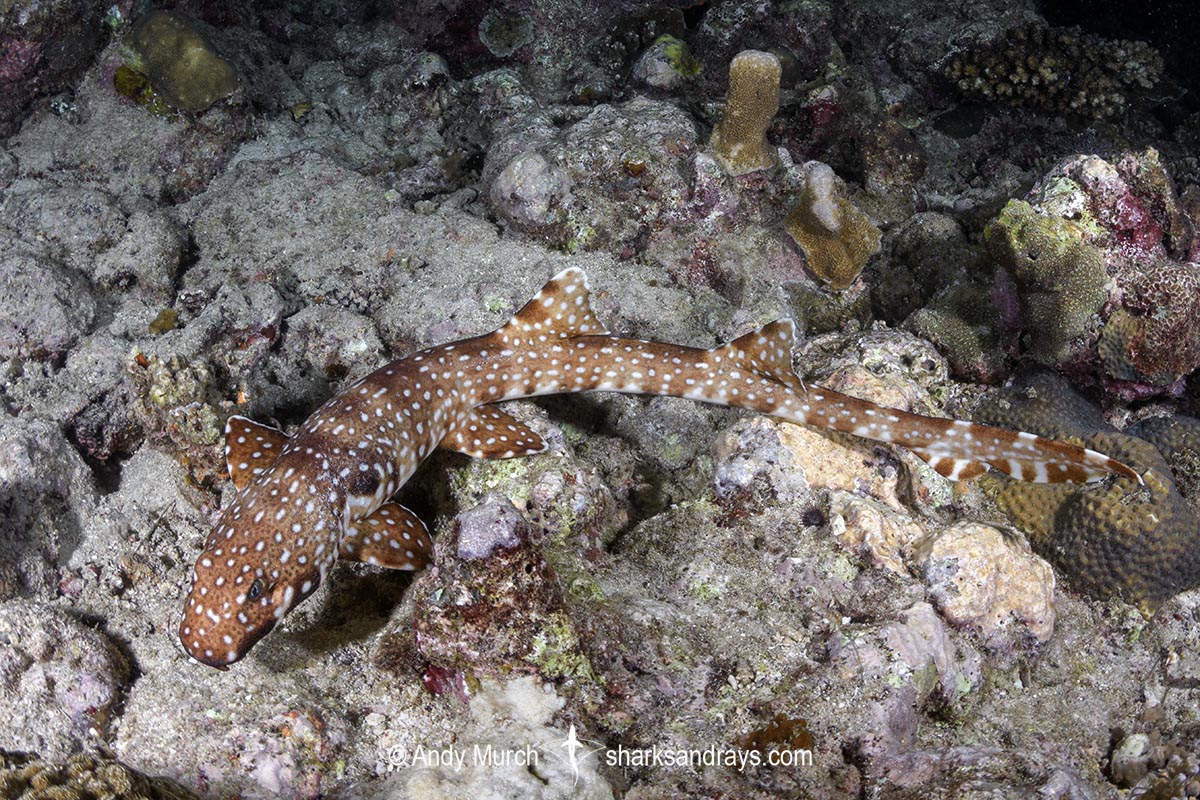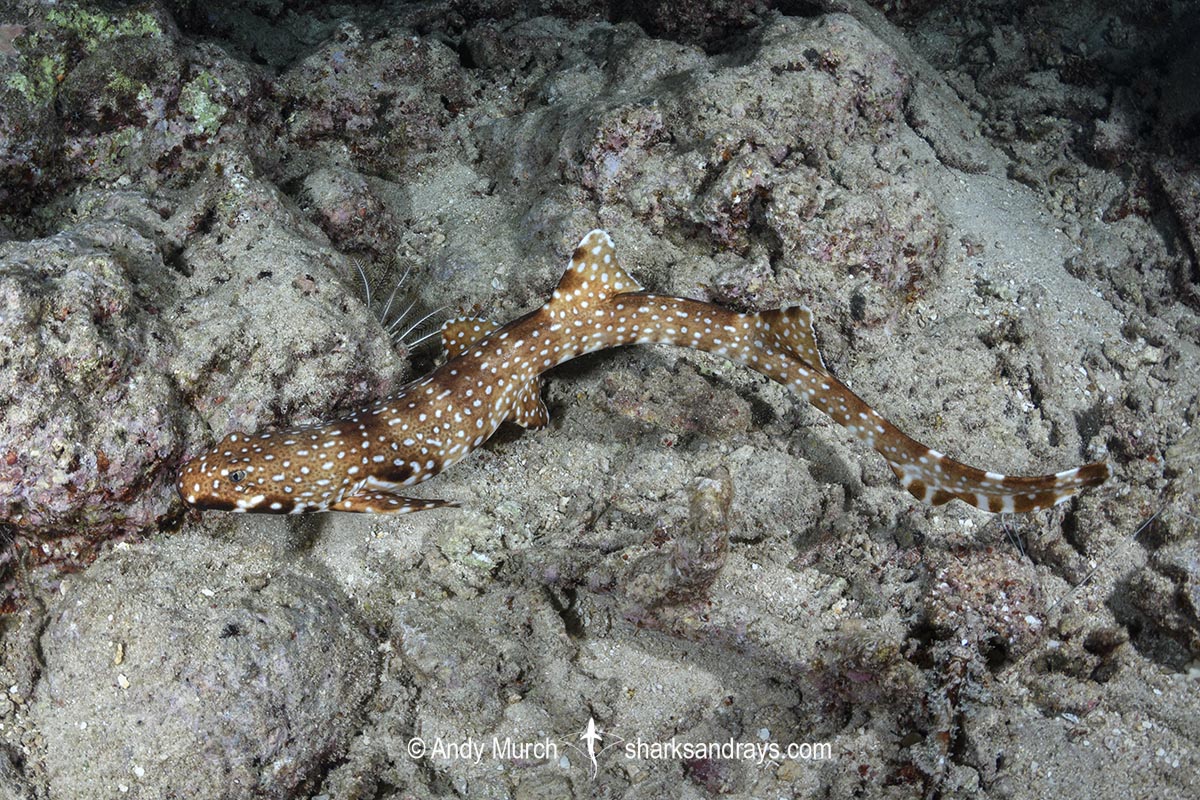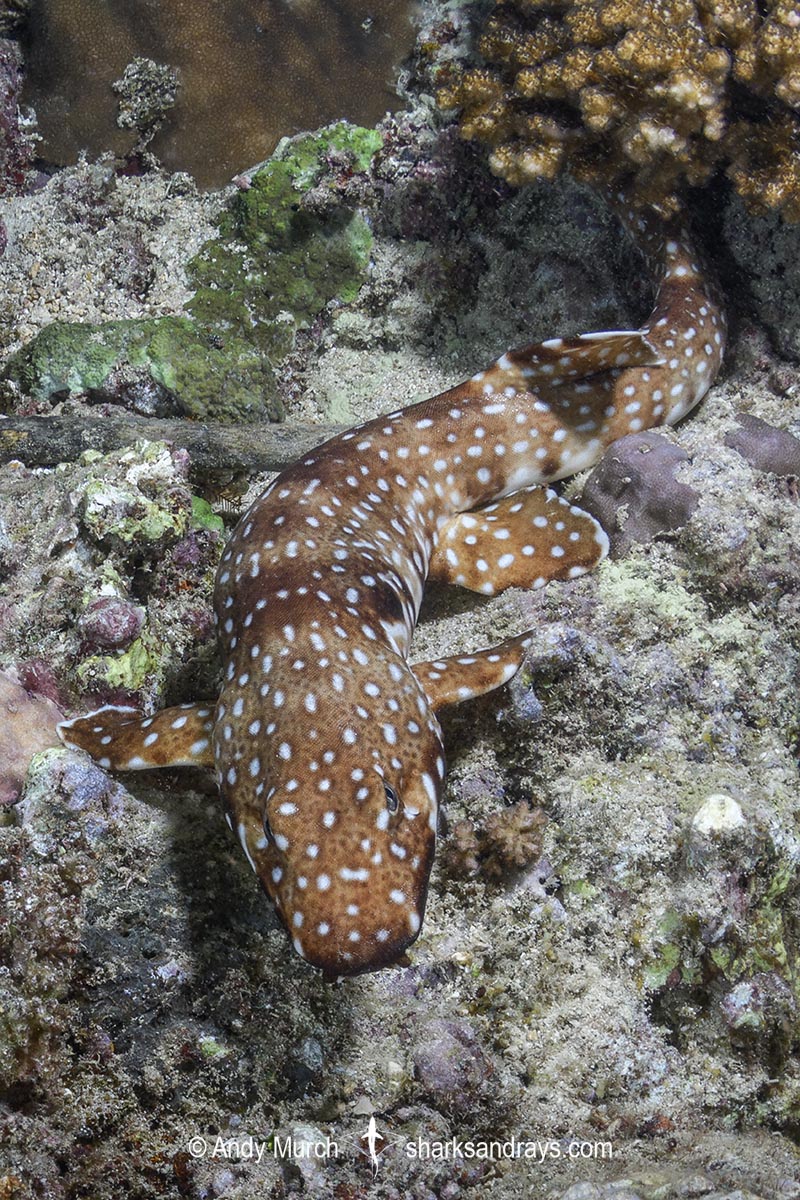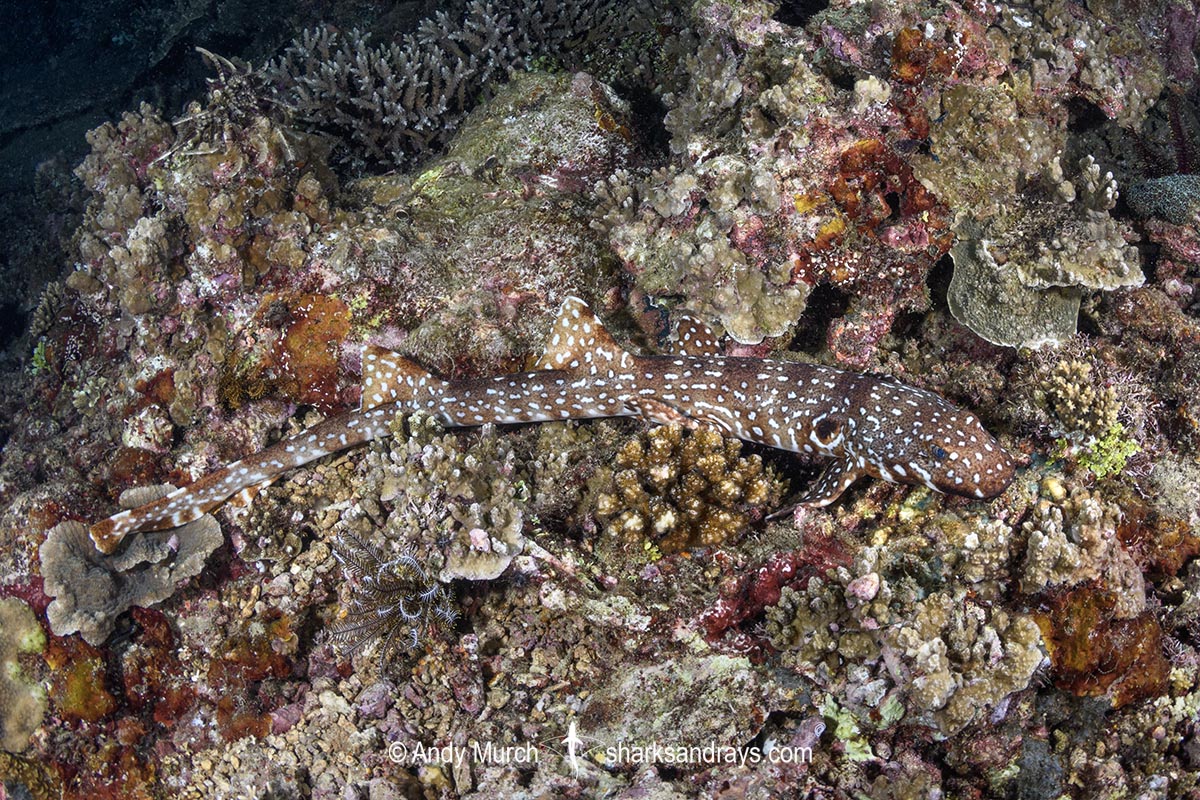Common name(s)
Hooded Carpetshark, Hooded Epaulette Shark.
Binomial
Hemiscyllium strahani
Synonyms
None.
Identification
Elongated, slender body. Well developed pectoral and pelvic fins on fore-body (used partially for walking). Two equally sized dorsal fins on rear-body. Tail long and straight with upper and lower caudal lobes on underside. Sub-terminal notch present.
Dorsal coloration pale brown with reddish-brown to dark brown bands or saddles and many small, irregular, white spots. Lower lateral coloration predominantly pale/white.
Dark but poorly defined ocelli, ringed in white on lower side. Very dark broken band around lower edge of head. Ventrum pale.
Juveniles more muted; lacking white spots.
Size
Maximum size at least 73cm.

Conservation Status
VULNERABLE
The Hooded Carpetshark (Hemiscllium strahani) is threatened from artisanal fishing throughout its range as well as habitat loss from coastal devepment and reef degradation due to climate change. Theis species limited depth and geographic range leaves it extremely vulnerable to environmental changes.

Habitat
Shallow tropical coral reefs. From the intertidal zone to 20m, but mostly shallower than 10m.
Distribution
Restricted to the north coast of West Papua and Papua New Guinea. From Jayapura eastwards to Madang.
Reproduction
Oviparous. Reproductive cycle poorly known.
Diet
Unknown.
Behavior
Nocturnal. Rests by day in crevices on the reef or under corals. Actively hunts at night on shallow reefs.
Reaction to divers
If not approached too closely, it is usually possible to watch this species hunting on the reef during night dives. Generally disappears into the reef when spotlighted or cornered.
Diving logistics
Hooded carpetsharks are relatively abundant on nearshore islands surrounding Madang. During one shallow night dive at Paeowa Island I found eight sharks in less than an hour.
Unfortunately, the dive shop in Madang has not reopened since the pandemic and plans for a reopening seem vague.
As this shark hunts in the open on shallow reefs at night, it may be possible to hire a small boat and snorkel at night around the island. If you attempt this, bring a few local guys for security because there is a real danger of being attacked by pirates.
There is a dive shop in Jayapura in West Papua, which may a better alternative, but I have not seem any H. strahani images from that area.











